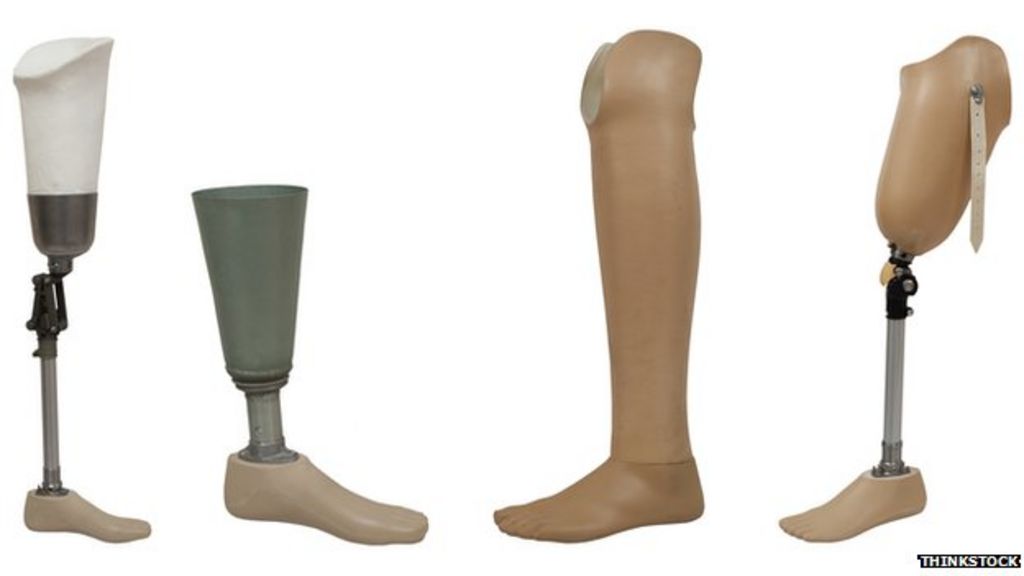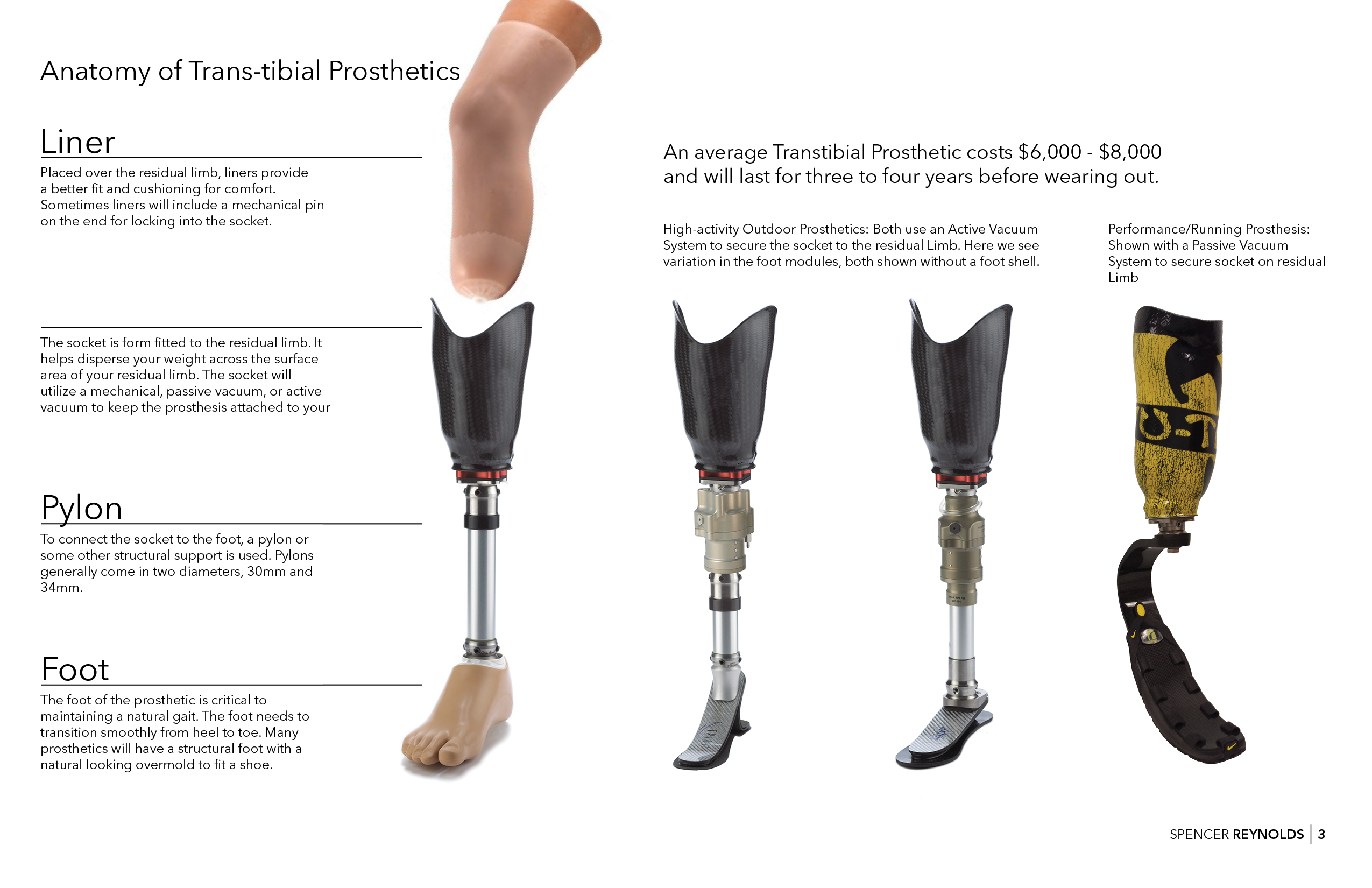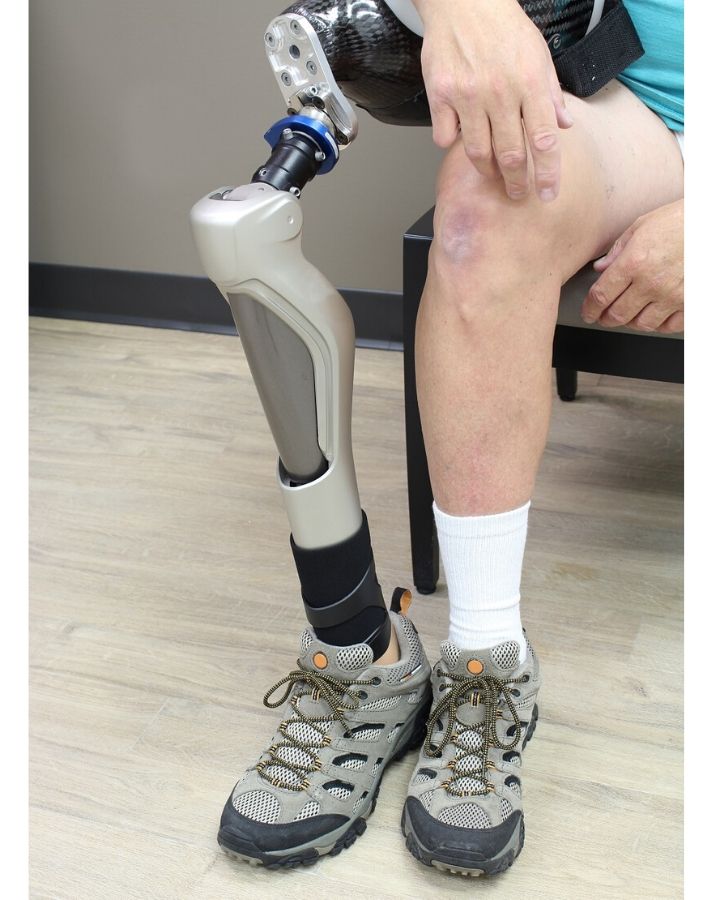
Lower Extremity Prosthetics Medcuro Prosthetics
10 Types of Prosthetic Legs 10.1 Below-Knee Prosthetic Legs 10.2 Above-Knee Prosthetic Legs 10.3 Syme's Prosthetic Legs 10.4 Hip Disarticulation Prosthetic Legs 10.5 Hemipelvectomy Prosthetic Legs 11 Advancements and Future Developments 12 Conclusion 13 Components of Prosthesis Legs - Frequently Asked Questions (FAQ)

What everyone should Know About Prosthetic Legs Premier Prosthetic
Prosthetic Leg Fit: Types of Knee Prosthesis for Leg Amputations There are many prosthetic leg options to choose from, and the best fit will be dictated by an individual's level of injury, physical factors, complications, as well as their lifestyle and vocational or recreational goals.

Prosthetic Leg Below Knee Best Prices Al Fadl Medical
We'll run through the basic components of a suction-based, below-knee, prosthetic leg and how they work. This should lay the foundation to dive deeper into e.

Artificial Leg Fitting Orthotics and prosthetics, Below the knee amputation, Legs
A prosthetic leg, or prosthesis, is a mechanical accessory that serves as a substitute for an organ that is missing in a person and partially or fully fulfills the role of the organ.

Prosthetic Leg 3D model CGTrader
A prosthesis (plural: prostheses) is an artificial device that replaces a body part lost through trauma, disease or a congenital condition. The components of a prosthesis depend on the body part it replaces. If the prosthesis replaces a leg, for example, you can call it a prosthetic leg. Socket The socket connects your residual limb to your.

Lower Limb Prosthetics PM&R KnowledgeNow
Prosthetic legs, or prostheses, can help people with leg amputations get around more easily. They mimic the function and, sometimes, even the appearance of a real leg. Some people still need a cane, walker or crutches to walk with a prosthetic leg, while others can walk freely.

above knee prosthetic leg 3D model animated CGTrader
There are two main types of prosthetic legs: mechanical prostheses and microprocessor-controlled devices. Mechanical prostheses provide all the core capabilities users need to walk safely and securely. Advanced microprocessor-controlled technologies are even more powerful, including many that can mimic natural walking movements.

Lesserknown things about prosthetic legs BBC News
There are three types of prosthetic elbows: simple locking elbows can be pre-positioned, then locked during an activity cable-controlled elbows are controlled by shoulder muscles and may be locked in place electronic elbows are controlled by myoelectric signals from muscles in the limb

Personalized Prosthetic ModKit Spencer Reynolds
There are different types of prosthesis designed to function — and sometimes look like natural arms, legs, hands, and feet. Today's Prosthesis options are lightweight, more comfortable, and technologically advanced, offering a wide range of motion.

Artifical leg Prosthetic leg, Orthotics and prosthetics, Leg prosthesis
A prosthetic leg is a device used to support users who are missing all or part of their lower limbs (hip, knee, foot, or toes) due to an injury, accident, illness, or congenital condition. Prosthetic legs can empower people with limb differences in many different ways. They can help users regain their mobility and independence, pursue their.

Sport Prostheses Prosthetic leg, Prosthetics, Legs
2 Types of Prosthetic Legs 3 Materials Used in Prosthetic Legs 4 Design and Functionality of Prosthetic Legs 4.1 Components of Prosthetic Leg 4.2 Fitting and maintenance of prosthetic legs 4.3 Rehabilitation and physical therapy 4.4 Physical Activity for Patients with Prosthetic Leg 4.5 The cost of prosthetic legs 5 Advancements in Prosthetic Legs

What Are Prosthetics? Educational Resources K12 Learning, Life Science, Science Lesson Plans
Prosthetic legs can be expensive, with costs ranging from a few thousand dollars to tens of thousands of dollars depending on the type of prosthetic leg and the level of customization required. It is important to check with your insurance provider to see what types of prosthetic legs they cover and what out-of-pocket expenses you may be.
Key parts of belowand aboveknee prostheses. Download Scientific Diagram
The two main types of prosthetic knees are the single-axis and the polycentric axis. Single-axis knees only bend the knee forwards and backward while polycentric axis knees have the ability to bend in multiple ways.. The structural components of a prosthetic leg are integral to its functionality. They are simpler than an upper limb in terms.

Quick Swap! ProActive Prosthetics
A prosthetic leg is a device used to support users who are missing all or part of their limb due to an injury, accident, illness, or congenital condition. Prosthetic legs can empower people with limb differences in many different ways.

Lower Limb Prosthetics PM&R KnowledgeNow
When talking about prosthetics and artificial limbs, it's important to note the differences between the various types and their specific uses.

The 4 Main Types of Prosthetic Limbs Stubbs Prosthetics & Orthotics 5 NearSay
271 Different prosthetic devices are used in different situations and it's important to understand the differences among them to make the right choice. There are 4 main types of prosthetics: Transradial — Artificial arms attached below the elbow. Transfemoral —Artificial legs attached above the knee or around the thigh.